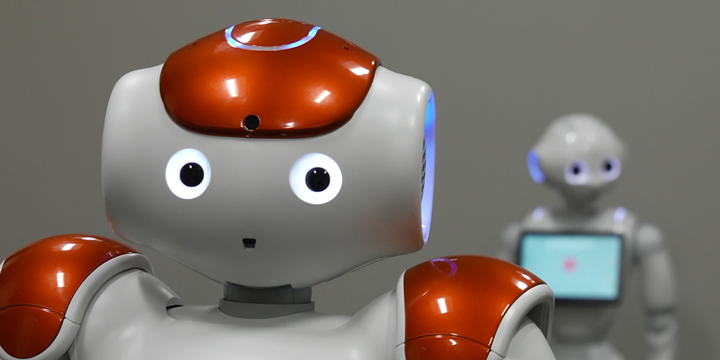The University of Texas at Arlington has launched a new Emotional Robotics Living Lab to investigate what our future will look like with robots and how they can be integrated into the home to provide physical and emotional support.
UTA's Emotional Robotics Living Lab Will Research How Robots Can Be Integrated Into Homes as Companions and Caregivers
Louisa Kellie | The University of Texas
How can we develop robots that humans can trust and respond to as companions and caregivers?
The University of Texas at Arlington has launched a new Emotional Robotics Living Lab to investigate what our future will look like with robots and how they can be integrated into the home to provide physical and emotional support.
“The idea here is not to replace humans but to fill a gap,” said Julienne Greer, UTA assistant professor of Theatre Arts and director of the lab. “We are using theatre arts to design ways for robots to create bonds of trust and emotion with humans of different ages and improve their quality of life.”

NAO® and Pepper® in the new lab
Greer and colleagues Ling Xu and Noelle Fields, both assistant professors in UTA’s School of Social Work, and Kris Doelling, research engineer at UTA Research Institute (UTARI), recently carried out a study with older adults at an independent living facility in Texas where the robot and adults interacted using well-known sonnets from Shakespeare. This study, which was funded with a $20,000 seed grant from UTA’s Interdisciplinary Research Program, found that after three weeks of interactions, there was a significant drop in depression and increase in human-robot social engagement among those older adults.
“We are now looking to make the experience more immersive so that the robot and the adults play out an entire scene of Shakespeare together, such as the Romeo and Juliet balcony scene,” Greer said. “We hypothesize that the more immersive the theatre intervention, the deeper and more positive the responses in older adults will be in regards to depression and social engagement.”
The new lab will feature two robots from SoftBank Robotics, NAO® and Pepper®. Pepper is a 4-foot-tall humanoid robot with large, expressive eyes and lifelike gestures that can connect with people on an emotional level. NAO is a smaller humanoid robot, designed to be an interactive companion.

Students interacting with NAO®
“We want to look at what it means to have a robot in the room, and plan to use theatre methodology to make that experience as engaging as possible,” Greer added. “Both robots are also actively used in the curriculum of the course I teach, ‘Robots, Digital Humanities and Theatre’ every semester, which involves hands-on student/robot interactions.”
The lab is designed with home spaces for older adults featuring mid-century furniture as well as a more modern play space for projects using children or younger adults.
In a related project, Fields is using $10,000 she received as a UTA Presidential Fellow to study whether theatre interventions with robots can also have positive effects on older adults with dementia or cognitive decline who live in assisted living facilities.
“Our hope is that these different studies could show that our Shakespeare robot intervention can have a general positive therapeutic effect on older adults, and provide new tools for those working with them to reduce depression and increase engagement,” Fields said.
UTA researchers have also been subcontracted by Georgia Tech to carry out research on how to create a collaborative relationship between an older adult parental caregiver, a care receipient with a developmental disability, and a socially assistive robot in order to develop engaging interaction that will allow caretakers to take some respite. UTA’s sub award is $108,000 and will be led on the UTA site by Xu, who specializes in aging.
“We all know that burnout among caregivers is a huge issue, especially for older adult caregivers who care for a loved one with a developmental disability,” Xu said. “If we can create an atmosphere of trust with the robot and caregiver as well as care receipient, then perhaps the caretaker will have time for a respite and personal down time.”
The content & opinions in this article are the author’s and do not necessarily represent the views of RoboticsTomorrow
Featured Product

